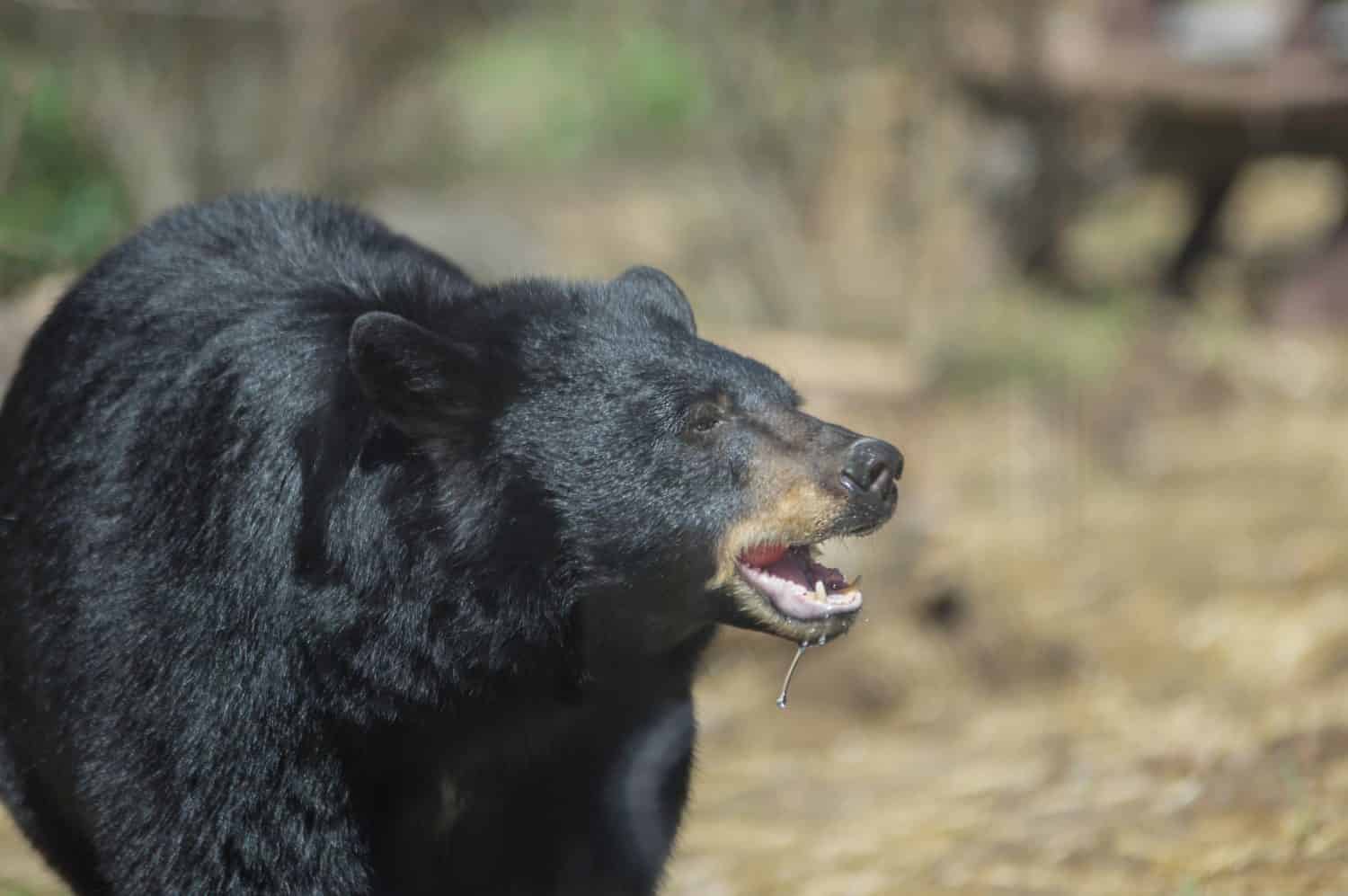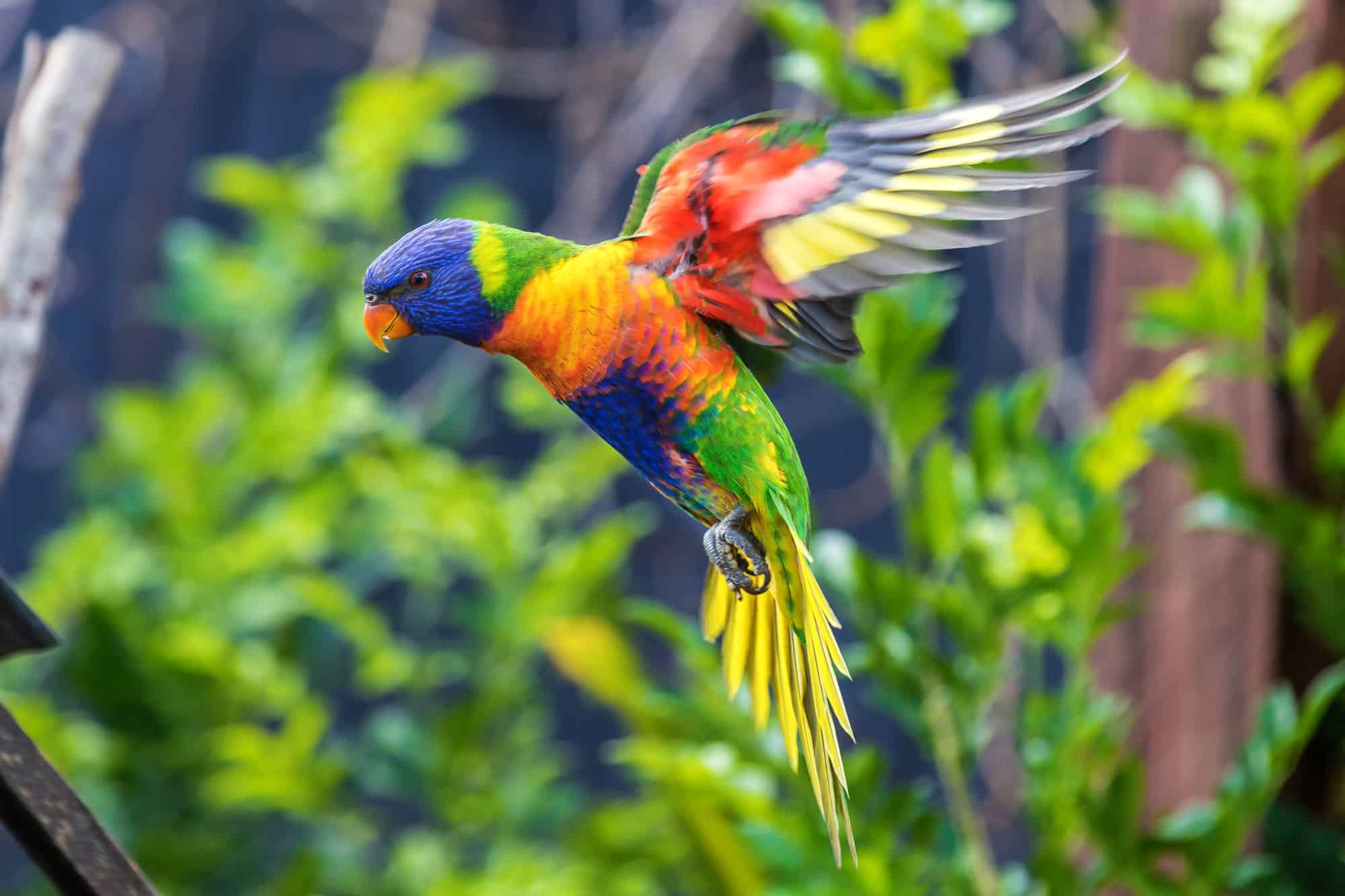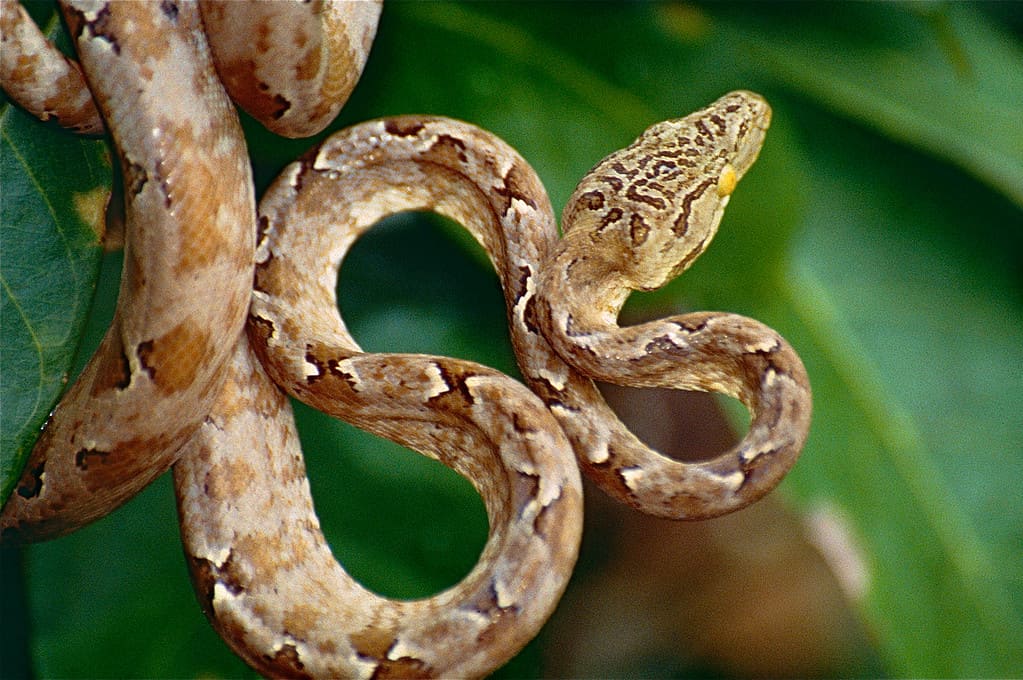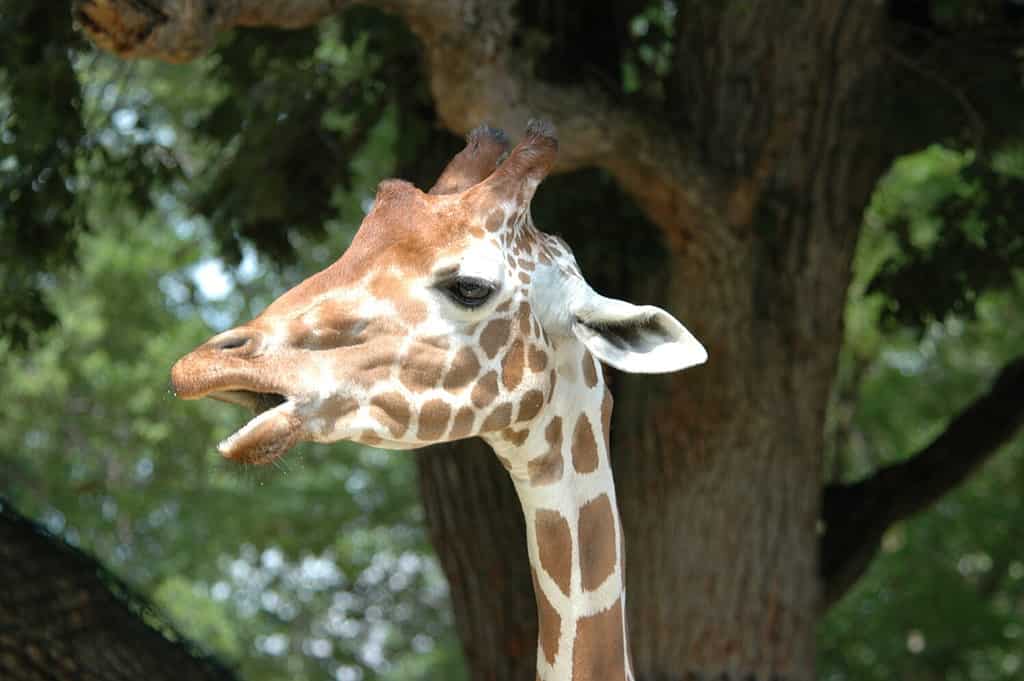The Birmingham Zoo is a large, 122-acre park that opened its doors on April 2, 1955. The Alabama Zoological Park houses approximately 550 animals at any given time. With more than 180 species, every visitor is likely to spot a furry favorite or most-loved mammal.
When to Visit
While summers are the busiest, one tip zoogoers recommend is to arrive early. Passing through the gate when the Zoo opens ensures less crowds. Additionally, it is recommended to choose a weekday rather than a weekend visit, to help ensure a more relaxed atmosphere.
Getting Started

The black bear can be viewed from the Barbara Ingalls Shook Black Bear Trail.
©MeganDCrumly/Shutterstock.com
Now that you know the optimum time to visit, here’s more information for planning your visit. A general admission ticket is required to pass through the gates, which are open from 9:00 a.m. until 4:00 p.m., Wednesday through Sunday.
Entry stops at 3:00 p.m. daily. Each adult ticket is $19.95, while children aged 2-12 are $14.95 each. Senior Citizen tickets are $16.95, and babies under two years of age are free. Tickets can be purchased online or upon arrival.
In addition to the general admission ticket, there are a variety of additional purchases that can be added to increase the experience. The following tickets are only available for purchase upon arrival:
The Birmingham Zoo is a non-smoking, non-vaping establishment; outside food and pets are prohibited. The exception is that service dogs are permitted. Upon arrival with a service dog, check in at visitor services for specific instructions.
Enjoying the Experience
The Birmingham Zoo is divided into three main wings: Main Zoo, Junior League of Birmingham-Hugh Kaul Children’s Zoo, and Trails of Africa.
The Main Zoo
This section of the Birmingham Zoo features seven distinct exhibits:
- Flamingo Lagoon
- Predator Building
- Southern Bayou
- Lorikeet Interactive Feeding and Observation Aviary
- Primate Building
- Wildlife Stage
- Reptile Building
The water-centric Flamingo Lagoon houses American flamingos and black-necked swans. The lorikeet aviary is only open during the spring and summer months. Viewing is free, but a ticket is required to interact and feed the lorikeets.

In addition to viewing these beauties, tickets can be purchased to feed the lorikeets.
©Guillem Lopez Borras/Shutterstock.com
The predator building will soon be known as the Asian Passage and features the African lion, bobcat, coyotes, Pallas’s cats, sand cats, wildcats, black-footed cats, and fennec foxes.
Within the southern bayou, guests can get clear views of the American alligator. Also found here and/or within the reptile building, a long list of reptiles is on hand, including the Komodo dragon, Eastern box turtle, Chinese three-striped box turtle, blue-tongued skink, Caiman lizard, and the royal/ball python.
Reptiles
Additionally, views of the Japanese pond turtle, desert tortoise, diamondback terrapin, Alligator snapping turtle, and the Eastern indigo snake are possible. For snake lovers, species such as the copperhead, timber rattler, cottonmouth, cane snake, and the garden tree boa are also on display.

The garden tree boa is one of several species on display at the reptile building.
©Bernard DUPONT from FRANCE, CC BY-SA 2.0, via Wikimedia Commons – License
Over in the primate building, guests can watch the antics of the Sumatran orangutan, De Brazza’s monkey, black-handed spider monkey, and the common squirrel monkey. Additional species include the black howler monkey, jaguars, and giant otters.
A variety of lemur species are also available for viewing, along with Hoffman’s two-toed sloth, giant anteater, the lesser Madagascar hedgehog tenrec, and the Virginia opossum.
Birds
Spread throughout various enclosures, the Birmingham Zoo has plenty of feathered fowl. A few examples include the wild turkey, mute swan, and the southern screamer. There are also African pygmy geese, ruddy ducks, and the tawny frogmouth. Roadrunners, marbled teals, and black-necked swans can be viewed throughout the park.

There are two species of roadrunner; the Lesser Roadrunner and the Greater Roadrunner.
©iStock.com/peterjquinn
A few other notable species include the pheasant pigeon, black-naped fruit-dove, the beautiful fruit dove, and the blue stork.
Children’s Zoo
Similar to the main zoo, this section of the zoological park consists of seven distinct exhibits as well. There is the Alabama barn, Alabama wilds, Barbara Ingalls Shook Black Bear Trail, the corral, Grandma’s back porch, Granny’s butterfly house, and Granny’s goose patch.
For those seeking goats, the Alabama barn is the perfect destination. For wild turkeys, North American river otters, fish, and sandhill cranes, a tour through the Alabama wilds is in order. It is important to note that Granny’s Butterfly House is open from Memorial Day through Labor Day only.
Trails of Africa
This expansion was first announced in 2007 but didn’t open until 2011. This exhibit features the safari café, waterhole exhibit, and an interactive boma yard.

For an additional cost, guests can feed the reticulated giraffes.
©Bull's-Eye Visual Arts/Shutterstock.com
Additionally, the Kiwanis Giraffe Encounter features reticulated giraffes, while the Main Elephant Yard is home to African bush elephants. The Rhinoceros habitat houses Eastern black rhinos and the Savannah Hoofstock Yards has Grant’s zebra, bongo, and ostriches on display.
Additional Activities
As mentioned above, there is a train ride and carousel available, but each requires an additional ticket. There are three gift shops throughout the Birmingham Zoo, one open on a seasonal basis.
There is a sea lion show that is ending with the 2024 season. A wildlife show and a few cafes round out the zoo experience.
The photo featured at the top of this post is © Deborah Ferrin/Shutterstock.com
Thank you for reading! Have some feedback for us? Contact the AZ Animals editorial team.






